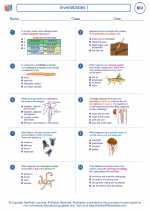Magnesium
Magnesium is a chemical element with the symbol Mg and atomic number 12. It is a shiny gray solid which bears a close physical resemblance to the other five elements in the second column (group 2, or alkaline earth metals) of the periodic table: all group 2 elements have the same electron configuration in the outer electron shell and a similar crystal structure.
Properties of Magnesium
- Symobl: Mg
- Atomic Number: 12
- Atomic Mass: 24.305 g/mol
- Physical State: Solid
- Color: Shiny gray
- Melting Point: 650°C
- Boiling Point: 1090°C
- Electron Configuration: [Ne] 3s2
Importance of Magnesium
Magnesium plays a crucial role in various biological processes. It is essential for the functioning of over 300 enzymes and is involved in energy production and DNA synthesis. Additionally, magnesium is important for maintaining normal nerve and muscle function, regulating blood sugar levels, and supporting bone health.
Sources of Magnesium
Magnesium is found in a variety of foods, including leafy green vegetables, nuts, seeds, and whole grains. It is also commonly added to fortified foods and dietary supplements.
Study Guide
When studying magnesium, it is important to focus on its chemical properties, biological importance, and sources in the diet. Understanding its role in enzyme function, energy production, and overall health is key to grasping its significance in biology.
Key concepts to study include the electron configuration of magnesium, its physical properties such as melting and boiling points, and the impact of magnesium deficiency on human health.
Be sure to familiarize yourself with the sources of magnesium in the diet and the recommended dietary intake for different age groups. Additionally, understanding the role of magnesium in specific biological processes, such as muscle contraction and nerve function, is crucial for a comprehensive understanding of this element.
[Magnesium] Related Worksheets and Study Guides:
.◂Biology Worksheets and Study Guides High School. Invertebrates

 Worksheet/Answer key
Worksheet/Answer key
 Worksheet/Answer key
Worksheet/Answer key
 Worksheet/Answer key
Worksheet/Answer key
 Worksheet/Answer key
Worksheet/Answer key
 Worksheet/Answer key
Worksheet/Answer key
 Vocabulary/Answer key
Vocabulary/Answer key
 Vocabulary/Answer key
Vocabulary/Answer key
 Vocabulary/Answer key
Vocabulary/Answer key
